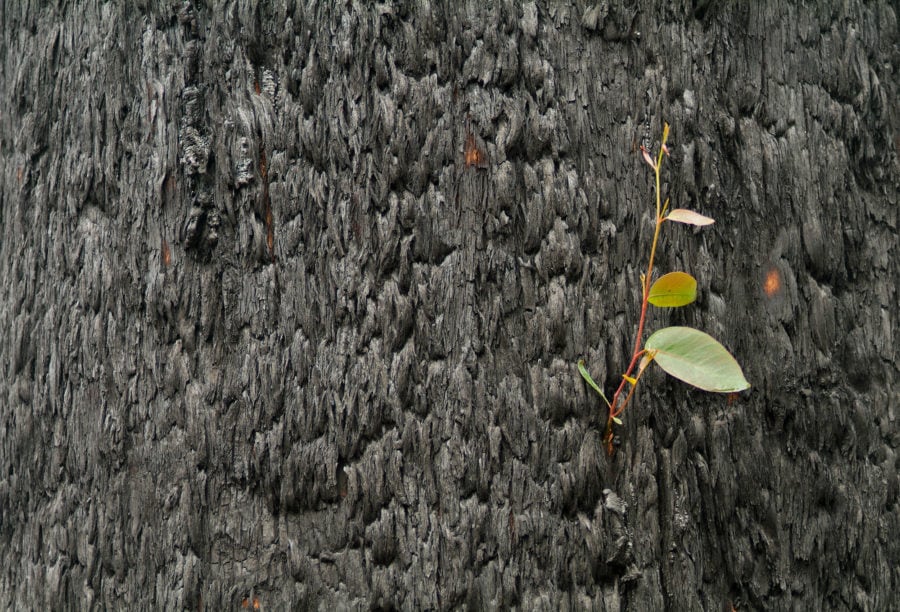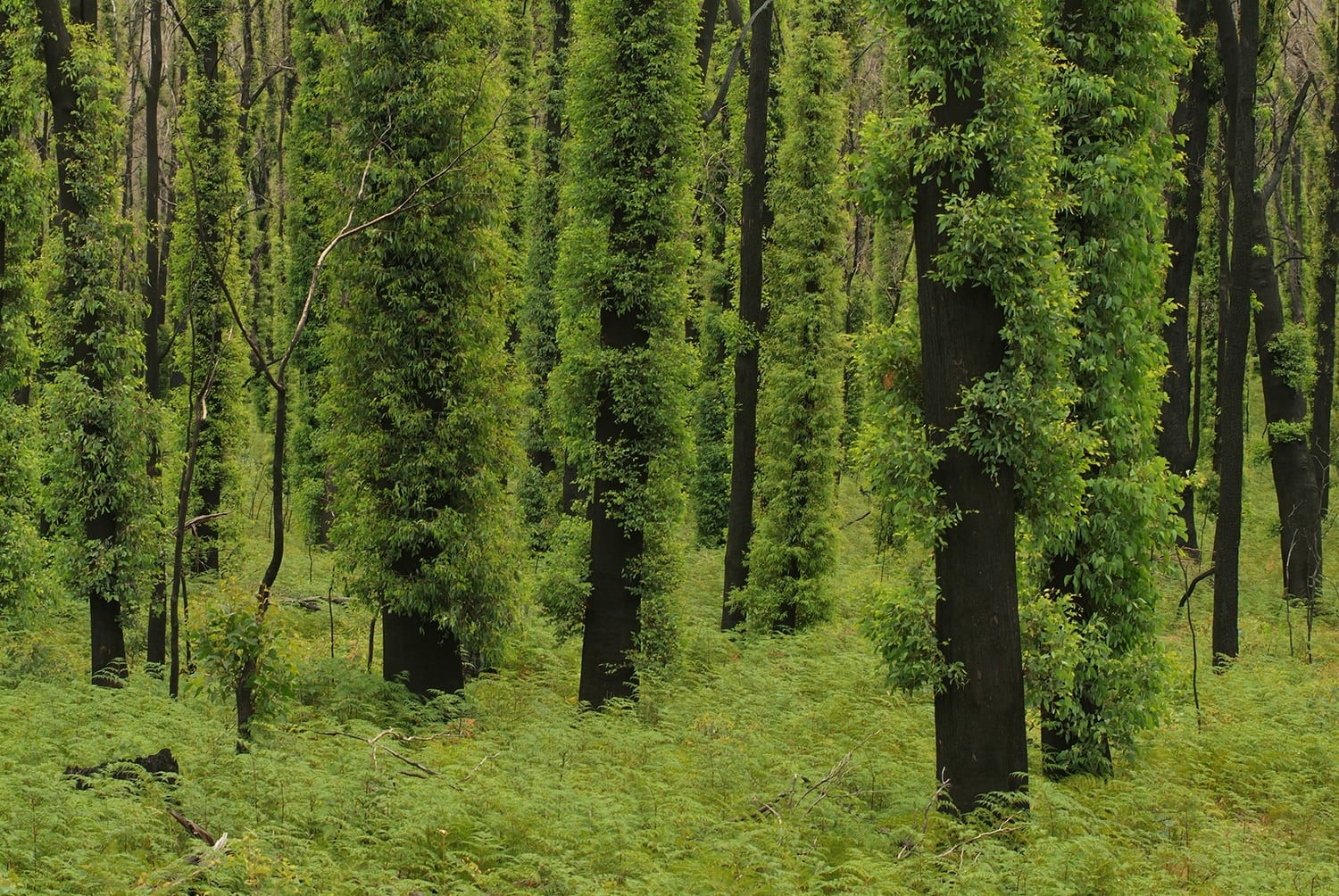Wildlife needs fire-damaged and dead trees after fires

According to a group of leading Australian environmental scientists the remains of trees damaged in fires will be vital for the recovery of our flora and fauna.
Rather than the mess they appear to be, fire-damaged trees and half burnt logs are valuable habitat for recovering wildlife, explains Professor David Lindenmayer from the Fenner School of Environment & Society at the Australian National University.
“Wanting to do something constructive, people and organisations may sometimes feel an urge to clean these up, but resisting this urge can be one of the best things people can do for wildlife,” David says.
“Fires burn patchily and small unburnt patches, half burnt logs and dead or fire-damaged trees are commonly left behind. Our research has demonstrated that these patches and remaining woody debris are very important to recovering wildlife populations. We have found that when burnt areas contain small unburnt patches – even as small as a single surviving tree – it helps an area recover much faster.”
Unburnt areas and patches are important to the recovering populations because they offer essential food and shelter until burnt areas recover.
“It is important to protect any of these remaining patches by not clearing them, and ideally to manage pest animals and weeds around these areas,” explains David.

Many trees that look dead will still be alive. In the months ahead, buds will sprout from under the blackened bark. This process, common in eucalypts, is known as epicormic growth, where growth of new shoots comes from epicormic buds that lie dormant beneath the bark. The growth is normally suppressed by hormones from active shoots higher up the tree, but when there is trauma from factors such as insect attack, drought or fire, these buds are activated.
Standing fire-damaged trees as well as dead trees and fallen logs also provide many resources, such as food, shelter and breeding hollows, to surviving and recovering wildlife.
“Of course, where something is a hazard, like a dead tree close to a road, the hazard needs to be managed, but this could involve felling the tree and leaving it onsite for the benefit of wildlife,” says David.
“At a time when habitat is so scarce, practices like burning or mulching remaining timber, salvage logging and mop-up burning rob landscapes of the features that wildlife will need to recover.”

